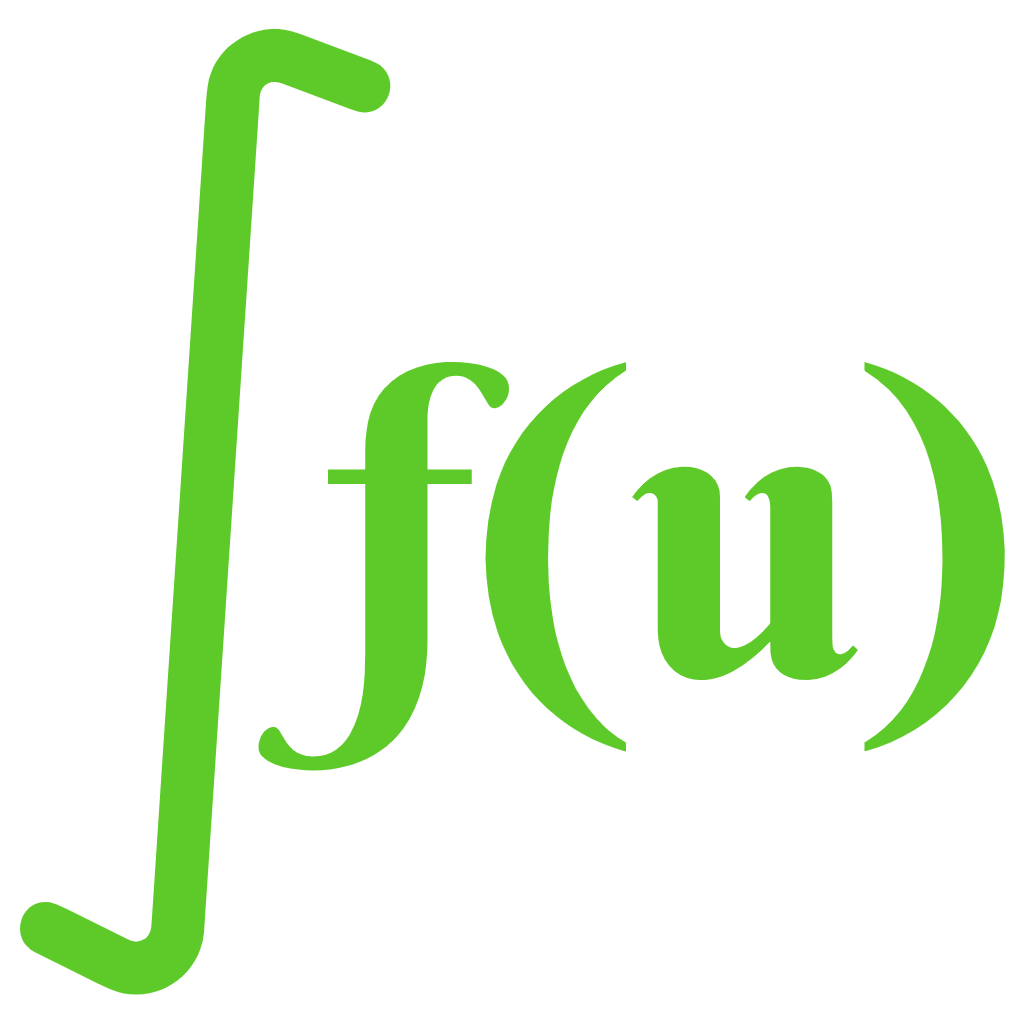Introduction to Simpson's Rule Calculator
The simpson rule calculator is an online tool that is used to solve definite integral problems of numerical analysis. It evaluates the area under the curve that divides into n number of elements in a bounded region of the parabola.
The simpsons rule calculator tool is valuable for mathematics students who are facing difficulty in solving long calculations of numerical problems, it will not only give accurate solutions but also explain each step by step-by-step process.

Our calculator aims to introduce you to the concept of Simpson's Rule and demonstrate how it can be applied to approximate integrals. Whether you're a student learning about numerical methods or a professional seeking a quick approximation, this tool will guide you through the basics.
In addition to Simpson's Rule, you also utilize the disc integration calculator. The Disk Method is a technique used in calculus to find the volume of a solid of revolution. By rotating a region bounded by a curve around a given axis, the calculator approximates the volume of the resulting solid using infinitesimally thin disks.
What is Simpson’s Rule?
Simpson rule is the approximation value of definite integral in a bounded region that split into n different number of terms. Simpson's rule provides a solution with minimum error and high accuracy because the Riemann sum or Trapezoidal rule does not provide a more accurate solution. It is used in the numerical analysis field to solve numerical problems.
The basic idea behind Simpson's Rule is to divide the interval of integration into smaller subintervals and approximate the curve within each subinterval with a quadratic function. These quadratic functions are constructed to pass through three points: the endpoints of the subinterval and the midpoint. By integrating these quadratic functions over each subinterval and summing their contributions, we obtain an approximation of the total area under the curve
If you're interested in exploring other numerical integration methods or if you're looking to calculate volumes of solids of revolution using different techniques, you might want to check out our volume of a washer calculator. This tool enables you to compute volumes using the washer method, another integral calculus technique commonly used in calculus courses.
Notation Behind Simpson Rule Calculator
Simpson’s rule has given two rules formula which is the 1/3 rule or 3/8 rule. The formula used by our Simpson’s rule calculator to solve problems is given,
$$ \int_{a}^{b} f(x)dx \approx \frac{\triangle x}{3} \biggr[ f(x_0) + 4f(x_1) + 2f(x_2) + 4f(x_3) + 2f(x_4) + … + 4f(x_{n-1}) + f(x_n) \biggr] $$
$$ \int ydx \;=\; \frac{3h}{8} \biggr(y_0 + 2 \biggr(y_3 + y_6 + … + y_{n-3} \biggr) + 3 \biggr( y_1 + y_2 + y_4 + y_5 + … + y_{n-2} + y_{n-1} \biggr) + y_n \biggr) $$
- h is the width of the subinterval
- a,b is the upper and lower limit
- For 1/3 rule n interval is even
- For 3/8 rule n interval is odd
Working Method of Simpsons Rule Calculator
In simpson's 1/3 rule calculator has a simple procedure that is used to solve a quadratic equation that is bounded under a curve in a small section. You always get precise results whenever you use it because it has advanced algorithms where Simpson formulas are installed.
When you give input in simpson calculator whether 1/3 rule or 3/8 rule problem in calculator, it will identify the function f(x) and its limit values a,b, and n number of intervals. After checking it, if n is even use the ⅓ rule, or if n is odd then use the 3/8 rule to calculate the given problem.
After that, it calculates the h with the help of limit as h=b-a/n then adds n (n=1,2,3…) values in the given function f(x) as f(x0),f(x1)... so on. Now it substitutes h,f(x), and n values in the required formula of simpson 1/3 rule calculator.
The simpson's rule error calculator will give a solution to your problem in a fraction of a second. You can use this tool to solve complex areas under a parabola graph.
The Simpson's rule calculator swiftly provides solutions, enabling users to efficiently solve problems involving areas under parabolic curves. For further exploration into integral calculus and visualization of solid volumes, you can utilize the cylindrical shells method calculator. This calculator aids in computing volumes of solids of revolution generated by revolving a region bounded by a curve around a line, offering a comprehensive approach to geometric problem-solving.
Let's see an example from the simpson's method calculator to know how it actually solves the problem.
Example of Simpson’s Rule
Simpson’s rule calculator gives solution of 1/3 Simpson’s rule or 3/8 Simpson’s rule in seconds. You can submit the assignments before its too late but on the other hand its also important to know how to calculate manually. So, to help you in this regard we have given some examples,
Example 1:
Calculate the area under the curve y=f(x) between x=-1 and x=5. Use Simpson's rule with n=6 subintervals.
Solution:
The formula for n=6 subintervals is given by,
$$ S_6 \;=\; \frac{\triangle x}{3} \biggr[ f(x_0) + 4f(x_1) + 2f(x_2) + 4f(x_5) + f(x_6) \biggr] $$
$$ f(x_0) \;=\; f(-1) \;=\; 4 $$
$$ f(x_1) \;=\; f(0) \;=\; 3 $$
$$ f(x_2) \;=\; f(1) \;=\; 2 $$
$$ f(x_3) \;=\; f(2) \;=\; 3 $$
$$ f(x_4) \;=\; f(3) \;=\; 6 $$
$$ f(x_5) \;=\; f(4) \;=\; 6 $$
$$ f(x_6) \;=\; f(5) \;=\; 4 $$
So the final value is,
$$ A \;=\; S_6 \approx \frac{1}{3} \biggr[ 4+4 . 3+2 . 2+4 . 3+2 . 6+4 . 6+4 \biggr] $$
$$ =\; \frac{1}{3} \biggr[ 4+12+4+12+12+24+4 \biggr] \;=\; \frac{1}{3} . 72 \;=\; 24 $$
Thus it is the final solution of our function with specific limits. Further, finding the area between two curves by calculating the definite integral of the absolute difference between the two functions over a given interval. you can utilize our area between 2 curves calculator. If you have the equations of the two curves, you can input them into the calculator along with the interval of integration, and it will compute the area between the curves accurately.
Example 2:
Determine the solution using Simpson’s ⅜ rule:
| x | f |
| 0.0 | 1.0000 |
| 0.1 | 0.9975 |
| 0.2 | 0.9900 |
| 0.3 | 0.9776 |
| 0.4 | 0.8604 |
Solution:
Using Simpson’s ⅜ rule,
$$ \int ydx \;=\; \frac{3h}{8} \biggr[ (y_0 + y_4) + 2(y_3) + 3(y_1 + y+2) \biggr] $$
$$ \int ydx \;=\; \frac{3 * 0.1}{8} \biggr[ (1+0.8604) + 2 * (0.9776) + 3 * (0.9975 + 0.99) \biggr] $$
$$ \int ydx \;=\; \frac{3 * 0.1}{8} \biggr[ (1+0.8604) + 2 * (0.9776) + 3 * (1.9845) \biggr] $$
$$ \int y dx \;=\; 0.36668 $$
Thus it is the final solution of our function with specific limits. Additionally, for exploring alternative numerical integration methods, you can use our trapezoidal calculator. This calculator facilitates the computation of definite integrals using the trapezoidal rule method, offering another approach to numerical integration.
Way to Use Simpson's Rule Calculator
The simpson rule calculator will enable you to calculate the quadratic equation that is enclosed in the bounded regions if you obey our guidelines you can easily utilize our calculator for the solution of definite integrals. These guidelines are:
- Enter the integral function in the given box
- Add the upper and the lower limit in their relevant box.
- Add the number of intervals n in its required field
- Press the “Calculate” button to get the solution from simpsons rule calculator.
- Recalculate button allows you to calculate new examples for practice
Simpson's 1/3 Rule Calculator Results:
The simpson calculator gives the result of your antiderivative problem after entering the input value in it.
Our simpson 1/3 rule calculator can also give other options along with results to provide you with deep knowledge. It may contain as:
This box gives you the solution to Simpson's rule problem.
It gives each solution to the Simpson rule problem calculation
Plot sketch a graph according to the given result
- Result box
- Possible steps
- Plot
Additionally, if you are interested in exploring alternative numerical integration techniques. you can utilize our midpoint rule formula calculator. This allows you to seamlessly switch between different methods and compare results, facilitating a deeper understanding of numerical integration principles and their applications.
1/3 Simpson’s Rule Vs 3/8 Simpson’s Rule
Although Simpson's rule has given both 1/3 and 3/8 rule there is a difference between them which gives us clarity on which rule gives the result with less error. These differences are
- Simpson 1/3 takes 2nd-degree polynomial while ⅜ rule takes 3rd-degree polynomial
- The 3/8 rule gives less accuracy in calculation than ⅓ gives more accuracy
- The 1/3 rule takes even multiple numbers while 3/8 can take odd multiply number
Despite we find the difference in 1/3 rule or 3/8 rule but our Simpson’s rule calculator will provide correct solution whether you give 1/3 rule problem or 3/8 rule problem.
Advantages of Simpson Calculator
The simpson's 1/3 rule calculator provides you tons of benefits when you use it for solving an area in a bounded region that divides into small numbers. These benefits are:
- It saves time in doing long-form calculations of integrals of numerical analysis
- simpson's rule error calculator is a versatile tool as it can handle definite integral that has n number of intervals
- It will boost your learning experience about integrals in numerical analysis.
- Simpson’s rule calculator provides an accurate solution with less error than other calculators used in numerical analysis.
Overall, the Simpson's Rule Calculator serves as a valuable tool for engineers, scientists, students, and anyone needing to approximate definite integrals efficiently and accurately.
Moreover, for exploring alternative numerical integration methods and gaining a deeper understanding of the concept, you can use our riemann sum limit calculator. Our calculator allows users to approximate definite integrals using Riemann sums, providing further insights into the behavior and applications of numerical integration techniques.

























